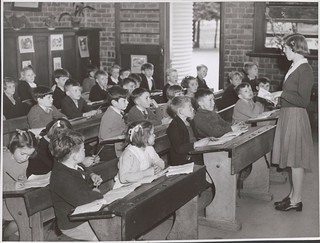Overview: This week has been an important eye opener in terms of the commitment and effort put into the continual assessment of children’s literacy and numeracy skills. Each child in the class has a ‘home link book’ which allows for constant teacher-to-parent communication regarding reading homework, spelling words and any additional notes or comments that need to be passed along. As an extension of this, children take home an extra home link book at the end of each term full of examples of their work across the curriculum. This provides parents with a visual representation of their child’s learning and progress throughout the academic year. Keeping these up to date and accurate obviously takes a lot of work and this week I’ve had the pleasure of taking part. In particular, I’ve been helping Mrs Jackson with assessing children’s reading ability and ensuring that they’re currently working at an instructional level. This is done by completing a reading record evaluation for each child, an example of which can be seen below.

Example a completed reading record for a higher ability pupil


Reading Record: Basically, the child is asked to read the teacher a story or a particular section of a story. As they’re reading, the teacher follows on the reading record sheet and ticks above each word that the child reads perfectly or writes either sc (standing for self correction, meaning that the child originally made a mistake but noticed it for themselves and corrected that mistake), tc (standing for teacher correction, meaning that the child was unable to read a certain word and the teacher had to intervene), R (standing for repeated) or if a child read a word wrong and didn’t realise/didn’t make an effort to correct themselves, the teacher simply draws a line above this word and writes down the mistake that the child made. This process is repeated for around 120-220 words, depending on a child’s ability. After the child has finished, the teacher asks basic recall and comprehension questions to check for understanding and knowledge of the text they’ve just read. At this point, the child has finished their work and it is up to the teacher to make notes and assess the child’s reading behaviors that have just been observed. This is broken into three main parts: knowledge and understanding of the text, strategies that the child used to read and the fluency of which he/she read the text. Then, once the appropriate boxes and details have been filled out, the teacher looks back over the errors and self corrections made throughout the text and analyses whether the child understood the meaning of the misread word, can recognise the structure or used visual skills to identify the word. This is done by looking at the mistake they made and the word that was actually written and using professional judgement.
Once all these sections have been completed, the teacher counts up the number of errors made and the numbers of s.c’s. These numbers, along with the total number of words read, are put into an online reading record calculator to calculate the child’s accuracy, self-correction rate and whether the level that they’ve just read is independent, instructional or difficult. Of course, the aim of the teacher is to have all children working at the instructional level (90%-95% accuracy rate) so that the reading is challenging, but not too hard. This takes time and effort and is normally completed during the teachers release time. At the beginning, I found it challenging to remember all the different codes I was meant to use, record everything that I needed to, judge whether the error was made due to a misunderstanding of meaning, structure or lack of attention paid to the visual of the word whilst also carefully listening to the child’s reading all at the same time! I was grateful for Mrs Jackson taking the time to explain everything in detail and allowing me to take the time to feel confident in what I’m doing before completing my own reading records. I feel it is a valuable experience and insight into the work of a teacher beyond just classroom teaching.
Highlights and Challenges: A real highlight of this week has been witnessing the children vote for Golden Time. In other schools I’ve been in, it is often the teacher that decides what the class will do for their half hour of free time at the end of the week. However in Mrs Jackson’s class, there is a ten minute slot on a Monday morning dedicated to democratically deciding what the class will get up to. Children are able to suggest different ideas (here are some of my favourite examples of such suggestions: making s’mores using candles, lollie (sweetie) scramble and nurf gun wars with hand made targets…this was possibly my favourite one to take part in). Then once all the suggestions have been made, each child gets a vote as to what they want to do. Everyone doesn’t have to join in with the same thing at the same time, for example some kids really enjoy playing on their iPads during their free time, but generally speaking there’s always something pretty exciting going on that appeals to all the ages in Room 7. I was genuinely really surprised at how seriously the teacher took some of the suggestions (the nurf gun war being a prime example) and wasn’t quite able to picture how it would all work out. But I’m getting more and more used to the relaxed attitude of everyone in the school, and falling more and more in love with it. The children loved making the s’mores, they shared all the lollies equally after the scramble (admittedly, that did take some prompting) and the pyjama party was a big success. They’re allowed so much more free reign and as a result, are already showing real skills in self management at the young ages of 6 years through to 8. Of course allowing the children to have more freedom requires more work from the teacher but I really do think it’s worth it. I love the idea of allowing the children to be limited by nothing other than their imagination (of course there are some restrictions…although bringing in pet iguanas isn’t one of them…) and it’s something I would really like to take on and use in my practice. Spending so much time with one particular class has allowed me to pick up on the little details that make up the classroom as a whole. This has provided ample opportunity to observe and pick up little tips and techniques that I aim to use to further my future practice.
A challenge of this week has been getting used to all the different systems in place throughout the school. Getting involved with the different duty roles, understanding how assemblies are run and learning more about the behaviour management system works are all examples of the above. In particular, I’ve spent time familiarising myself with the organisation of the reading books (which ties in nicely with reading recovery) and this has helped me to understand the vast amount of organisation that goes into the overall job of teaching children to read. Assessing a child’s ability, matching this up to the correct level of difficulty of reading book (which requires an in-depth knowledge of the different levels available at the school, of which there are many), hearing the children read, correcting/encouraging them appropriately, ensuring that their ability progresses at an appropriate rate whilst simultaneously recording all this information are all important elements of teaching a child to read. And there’s not just one child in the class, there’s 27 of them! Although it has been a challenge to grasp all this new information, it’s also been a real highlight for me. I’ve thoroughly enjoyed learning about this aspect of a teacher’s role and I know that it will undoubtedly further my future practice. And that’s really what I’m aiming for in this placement, so I can’t really complain!
Audit of personal and professional skills:
This week has helped me to develop skills in research, evidence gathering and to adopt a rational and critical approach to choice and decision-making. Assessing the children’s reading required quick decisions in terms of the ‘type’ of mistake the child was making and what should be done in order to help them improve their reading skills. It took a few tries to gain confidence in my own assessment ability but through comparing the results of my running records to that of Mrs Jackson’s, I feel I got considerably better at accurate assessment the more I practiced. These are of course directly transferrable skills and although I may not use this exact technique in the future, the experience, practice and knowledge will undoubtedly strengthen my understanding when it comes to performing such tasks regularly and professionally.










